Leading social media based analysts question July Revolution's "mastermind" and the viability of a third political force
-66e558d9de489.JPG)
Zahed Ur Rahman and Saiyed Abdullah (from left to right)
During the later part of Sheikh Hasina’s 15-year autocratic rule, Zahed Ur Rahman, a physician-turned-political analyst, emerged as a leading critic of Hasina’s regime.
Unlike many prominent YouTube critics, Zahed, widely known as Dr. Zahed, is based in Dhaka, where his modest studio has become a hub for his insightful monologues.
His critical analyses, marked by their depth and impartiality, have attracted millions of viewers.
Dr. Zahed is highly knowledgeable and approaches various issues with honesty and without political bias. Despite the clear political leanings of most TV stations under Hasina’s regime, he was frequently sought after for his expert commentary on TV talk shows.
In contrast, Saiyed Abdullah's rapid rise is a more recent phenomenon. A law graduate from Dhaka University, Abdullah first gained attention early this year by exposing the defaulted loan history of popular YouTuber Rafsan the Chotobhai’s family.
He further made headlines with his investigation into a scandal involving the extravagant purchase of a goat by the son of a corrupt NBR official, a controversy now known as “Chhagol Kando.”
During the July student-led uprising, Abdullah’s popularity surged, with his Facebook following expanding from around 30,000 to approximately 550,000 in just a few months.
This rapid growth has established him as a prominent voice on current political and legal issues.
Bangla Outlook (English) editor Faisal Mahmud recently interviewed these two influential social media analysts to discuss the July Revolution, the first month of the Yunus government, and the potential trial of Sheikh Hasina.
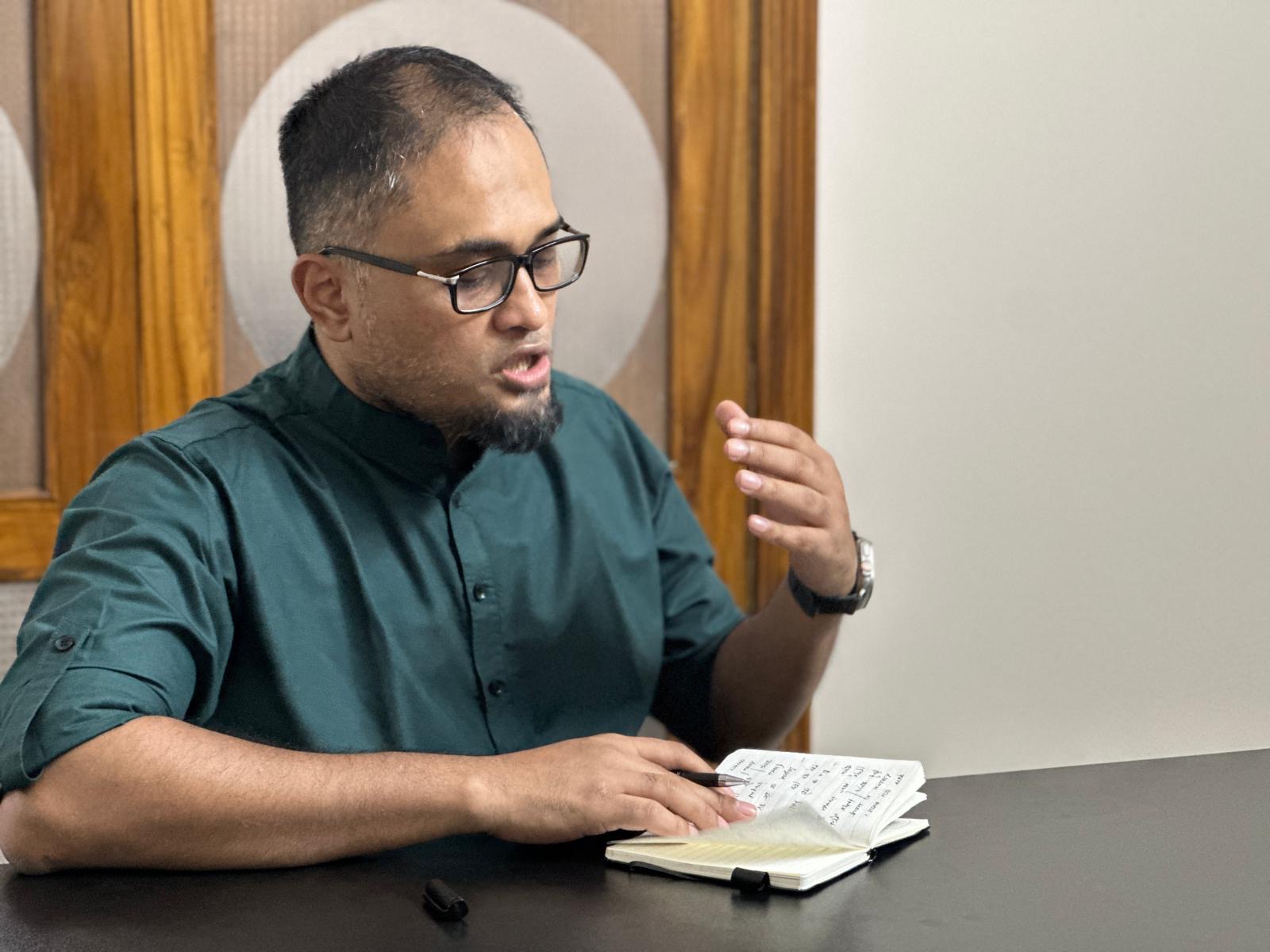
Here is an excerpt of that conversation.
Faisal Mahmud: I’d like to start with Zahed bhai: Can you identify two key moments that particularly transformed what happened in July-August from an uprising into a full-blown revolution? What, in your view, were those pivotal moments?
Zahed Ur Rahman: To be honest, I don’t consider it a revolution; it was more of an uprising. Labeling it as a revolution might lead to various claims and interpretations. In my view, the two key triggers were Sheikh Hasina referring to the demonstrators as “children of Razakar” and the video of Abu Sayeed being shot.
These moments were pivotal because if Sheikh Hasina had not labeled the protesters in such a derogatory manner, the students might not have reacted with such urgency. Their dignity was deeply affronted, which led many to join the protests.
This massive turnout sparked a chain of events. For instance, the Chhatra League attempted to suppress the demonstrations using the same tactics they employed during the 2018 road safety movement, resorting to violence to disperse the crowds. The brutal assault on the protesters, especially the female students, led to disturbing images that heightened public outrage.
Meanwhile, the video of Abu Sayeed had a profound impact both domestically and internationally. His image of stretching arms, standing defiantly in front of police brutality has become the poster of this uprising. His cold blooded murder in the hand of police exposed both state brutality and the infectious nature of courage.
Hasina's regime maintained power through fear, but Abu Sayeed's act sparked a wave of courage that manifested in various ways, leading to further landmark incidents. The video's global reach, even being shown by pro-Modi Indian media, highlighted the regime's brutality on an international stage.
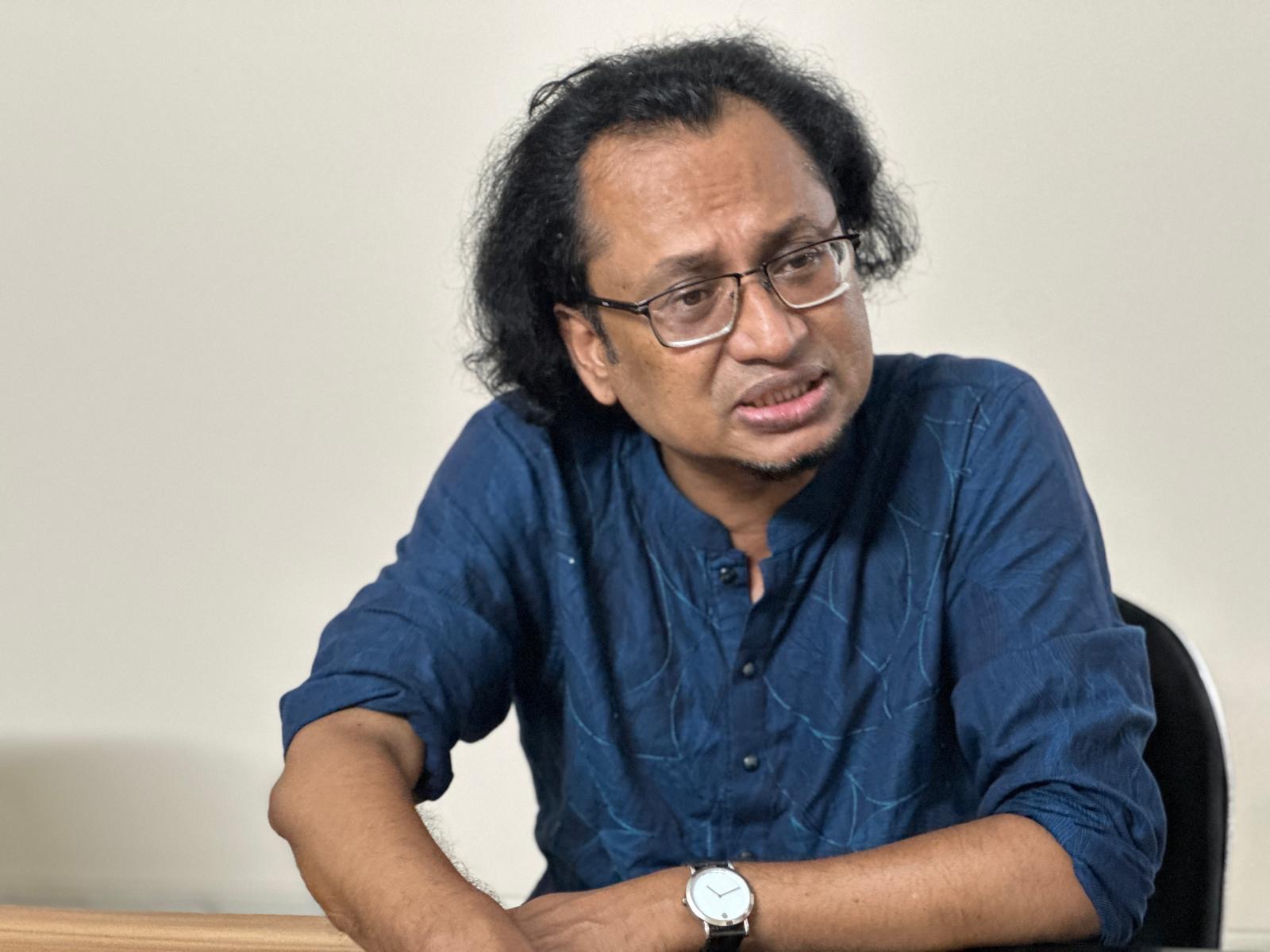
FM: Saiyed Abdullah, the same question is for you, if you talk about two trigger moments of this revolution or uprising– whatever it is–that led to the downfall of the government, what will be those trigger moments in your opinion?
Saiyed Abdullah: I view the movement’s key moments as unfolding in two distinct phases. The first phase extends from the 14th until the death of Abu Sayeed, while the second phase starts on the morning of the 18th, when private university and madrasa students joined the protests.
The initial phase marked a profound shift in public sentiment. While activists and journalists had previously challenged the regime, it was on the 14th that direct confrontation with Sheikh Hasina became a reality. Shortly after the prime minister's press conference on that day, students took to the streets in unprecedented protest.
For the first time, they chanted slogans directly against Sheikh Hasina, breaking away from the previous practice of dehumanizing protesters by labeling them razakars. This bold and direct criticism signaled a significant turning point in the movement against Hasina's autocratic regime.
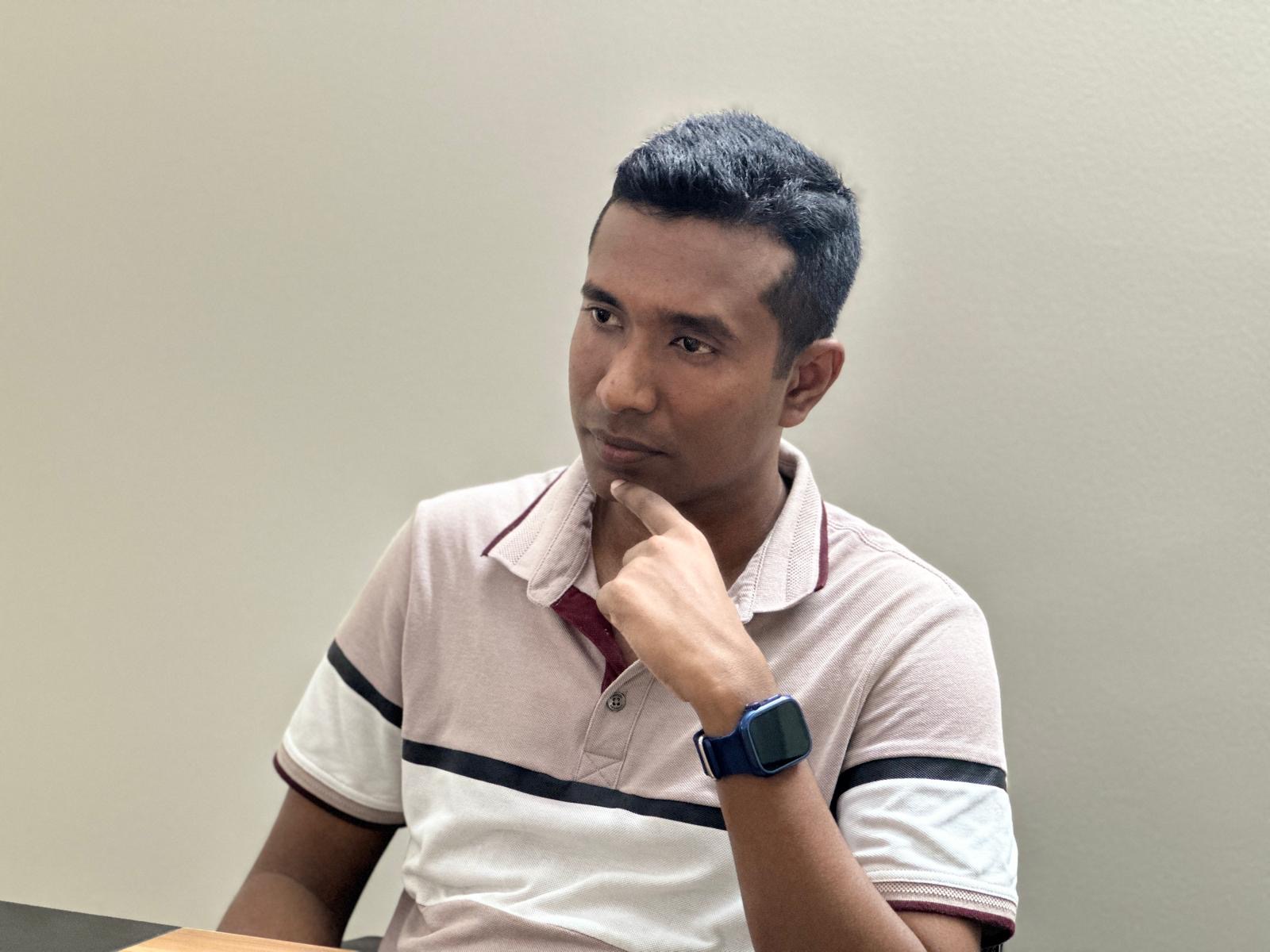
The fatal shooting of Abu Sayeed was a critical moment that underscored the regime’s willingness to use lethal force against students. This act of violence shifted the movement's focus from demanding quota reform to directly challenging Sheikh Hasina's authority.
But on the 18th, the participation of private university students—who had typically remained on the sidelines of such protests—infused the movement with new energy, preventing it from being stifled after the initial crackdown.
This surge in involvement also brought the harsh realities of state oppression to Dhaka's urban elite, broadening the movement’s scope to a more comprehensive fight against authoritarianism. These two pivotal events—the shooting of Abu Sayeed and the involvement of private university students—were crucial in shaping the movement's direction.
FM: For my second question: To what extent was this movement or mass uprising spontaneous, and how much of it was preplanned? Many people have suggested that it was orchestrated by a mastermind. Do you believe the movement was meticulously planned, or was it entirely spontaneous?
ZUR: The origins and evolution of the movement, along with the key moments we've discussed (and more yet to be covered), underscore its spontaneous nature. This was not a strategically planned effort to remove Hasina; rather, it unfolded organically.
I often compare it to the situation in Tunisia, where a street vendor's self-immolation initially sparked minor unrest, but it was the transfer of his body to Tunis that ignited widespread anger against the regime.
In Bangladesh, predicting which event would lead to Hasina's removal was nearly impossible. Even the presence of the Awami League at BNP's pre-election rallies, reflecting public discontent, indicated the government's apprehension about a potential uprising.
Had the situation been different, the Awami League would not have needed to take to the streets; they had police and other coercive forces at their disposal. Despite mocking the BNP for their failures, the Awami League's own street presence revealed their underlying concern about growing public dissatisfaction.
As I mentioned, the derogatory label of "children of razakars" had a profound impact. This insult deeply offended protesters and spurred female students to take to the streets in significant numbers, playing a crucial role in the movement. The physical assault on students by Chhatra League on the 15th, particularly the widely circulated image of a bloodied girl, further intensified public outrage.
It is doubtful whether Sheikh Hasina anticipated the dramatic consequences of labeling the protesters as razakars. Her reaction to questions from journalists suggests that she was caught off guard. Similarly, Abu Sayeed’s death—following his being shot with rubber bullets—was highly unusual, and the video capturing his bravery—standing unarmed with arms outstretched—fueled the movement further.
Without that iconic image and the bravery it represented, it's unclear if the same level of defiance against Sheikh Hasina would have emerged. The courage shown in the face of such adversity has indeed shifted public perception and response.
The involvement of private university students was also a significant factor. These students, who were not initially part of the quota reform movement, represented the urban elite and were not directly affected by the quota system. Some may even have family members who benefited from the regime's corruption, potentially leading to some support for the government. Yet, witnessing the widespread violence altered their perspective. Such realizations were not orchestrated but emerged organically from the events they observed.
Other events also contributed to Sheikh Hasina’s downfall, such as her insincere displays of sympathy during visits to affected metro stations. Can such reactions be planned? Her staged displays of emotion—first at the hospital and then at the stations—angered many people.
Additionally, the military’s decision not to intervene became significant, especially after the military chief met with mid- to lower-level officers. The timing of the appellate division’s verdict, which could have been delivered sooner, also highlights how a movement cannot be orchestrated through the coordination of numerous unrelated events.
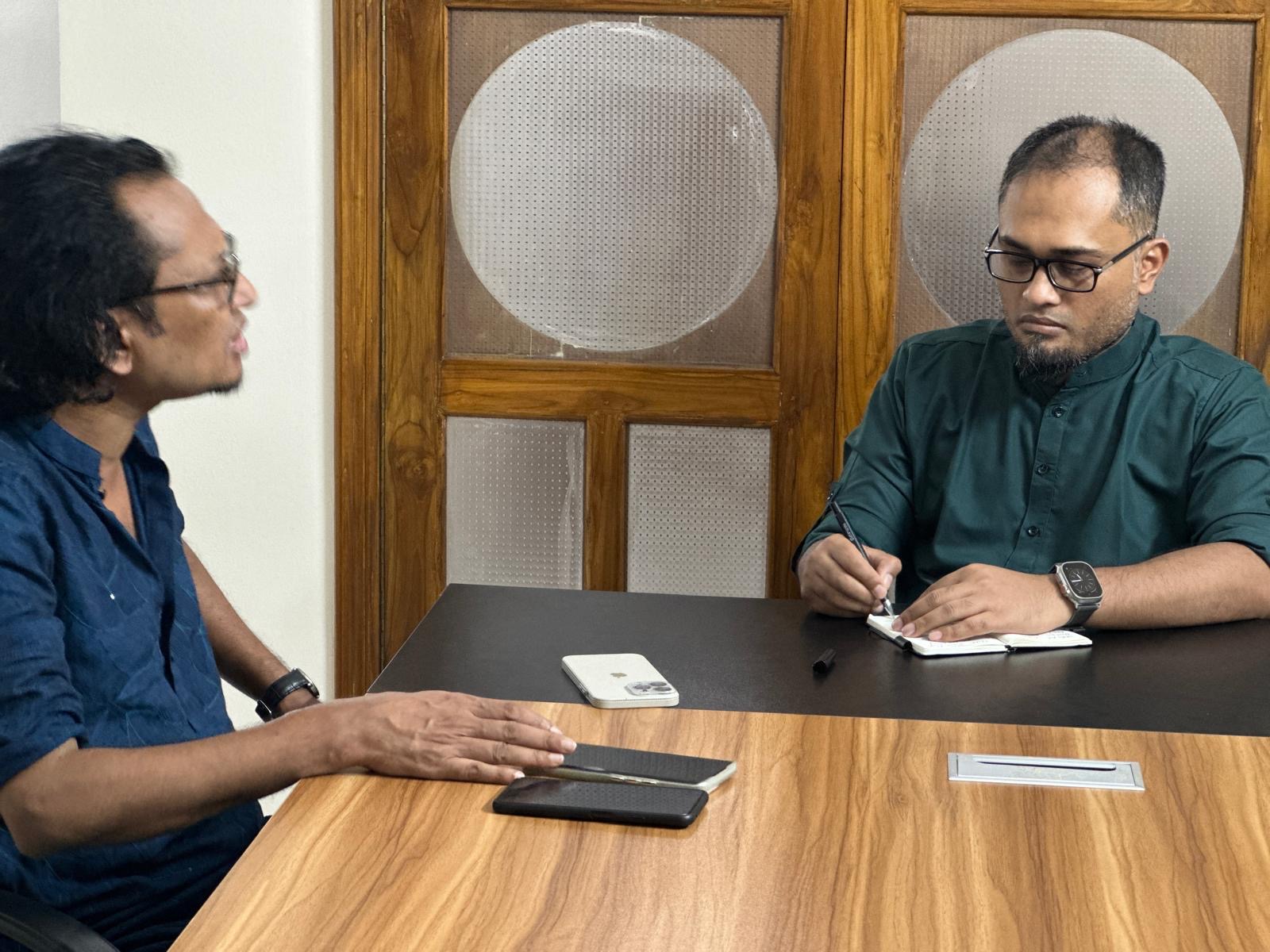
The impact of the numerous deaths may have further influenced the movement, making its outcome unpredictable. While the movement might have diminished following the court's verdict, the accumulating anger against the government sustained it. People’s motivations are diverse when given a platform.
I frequently cite Zahir Raihan's story "Shomoyer Proyojone" as an example of how the freedom fighters of the 1971 war were motivated more by personal experiences of local atrocities than by abstract ideals. Here too, the fury driving people to the streets stemmed from a range of personal grievances.
Despite the risks taken by student leaders, the lack of centralized coordination—such as disagreements over whether to present the movement as a six-point agenda or otherwise—actually worked to their advantage. When six key leaders were detained, the movement persisted with new coordinators emerging. The varied approaches of these new leaders further indicate that the movement was not orchestrated by a single mastermind.
If there were any orchestrators behind the movement, attributing its success to one individual doesn’t fit the nature of the movement. The momentum of the July movement was built on a long history of discontent, with political forces, including Jamaat up to 2014, significantly shaping public sentiment and mobilizing people.
FM: I have the same question for Abdullah. Do you agree with Zahed Bhai’s perspective, or do you have a different view and would like to add anything?
SA: I completely agree with Zahed Bhai. To expand on his points, the movement's success can largely be attributed to the absence of a central mastermind, which made it difficult for the government to categorize or predict its progression.
Had there been masterminds behind the movement, the extensive digital surveillance by the Bangladeshi government would likely have identified and suppressed them.
With no central figure, participants acted autonomously, allowing for flexible responses such as the transition from eight demands to nine and eventually consolidating into a single demand. If the movement had been orchestrated by a few individuals, such coordination would have posed significant risks.
The movement's success was also influenced by the government's focus on political opponents as their primary threat. They had established a pattern of countering BNP’s public meetings with their own, implementing crackdowns, and detaining leaders and activists, particularly from late 2022 to October 28, 2023.
The government's strategy for suppressing the quota reform movement was disrupted by the new movement's unpredictable incidents. Had it been planned, the government could have anticipated it through intelligence reports.
Despite their extensive surveillance capabilities, the government was caught off guard when private university students began protesting spontaneously on the 18th. The internet shutdown and the incoherent statements made by Zunaid Ahmed Palak only intensified public reaction, leading to the creation of numerous memes and trolls. These statements, though dismissed by some as nonsensical, resonated widely and reached even the youngest members of the general populace.

There were several moments on the 14th, 15th, and 16th when the movement could have been suppressed. What was striking about this movement was the seamless transition of leadership: whenever a leader stepped back, three or four new students emerged to take their place. This was a distinctive feature of the movement.
The lack of a single identifiable mastermind—who could have been quickly arrested if they had posed a serious threat to Sheikh Hasina—further supports the notion that the movement was not orchestrated by one individual. Instead, it was propelled by past electoral dynamics and the spontaneous engagement of political parties and the public.
Each event built upon the last, and Sheikh Hasina’s overconfidence in her invulnerability, combined with her fear of BNP-Jamaat, led her to underestimate the broader public resistance. A closer examination of these events shows they unfolded organically.
FM: My third question is about the interim government led by Prof. Yunus, which has now been in place for over a month. Looking at their performance during this period, how would you rate them? What do you consider to be their achievements, and what aspects do you think have been less effective? Abdullah, you go first.
SA: It’s too early to fully evaluate the success or failure of Prof. Yunus's interim government, as we are still waiting to see the results of ongoing institutional reforms. One major concern is that the police and secretariat, heavily politicized under the Hasina regime, still include many individuals who previously worked closely with the authoritarian government and remain in their roles for security reasons. This situation is fueling negative public perceptions and raising questions about whether the interim government is being too lenient.
There is also unease about the lack of transparency concerning certain unpopular political figures whose whereabouts are unknown. The public is troubled by the absence of arrests for these individuals, which is an issue that the interim government must address.
On the positive side, Prof. Yunus’s government has made notable progress in economic reforms, including key appointments and changes in the banking sector, demonstrating their prudence. However, some weaknesses are evident, such as the appointment of individuals who may lack the necessary decisiveness to effectively manage the administration. The leniency of some appointees has led to public disappointment due to a perceived lack of decisive action.
Additionally, the interim government has succeeded in reinforcing the idea that Bangladesh belongs to all its citizens. From Dr. Muhammad Yunus’s arrival at the airport to his press conferences, his consistent message has been that Bangladesh is a country for all its people. This effort has helped renew the public's sense of ownership and connection to the nation.
FM: Zahed Bhai, how would you evaluate the first month of the interim government's tenure? What is your assessment of their performance so far?
ZUR: Let’s start with the negative aspects. While I recognize that one month is a relatively short period for enacting substantial changes, the interim government led by Prof. Yunus has not demonstrated significant visible action. We have to remember that the government has taken office amidst exceptionally high public expectations.
Historically, even caretaker governments faced some degree of corruption and rent-seeking, but the situation was not as severe as under a non-elected regime. Given the severe crises endured under Sheikh Hasina's rule, the public's high hopes for improvement are entirely understandable.
For instance, consider a situation where someone who once could only afford pangash fish bones now expects to eat the fish itself. After Hasina’s departure, extortion cartels vanished, leading to a decrease in prices for vegetables and other goods. However, with the resurgence of these cartels, prices have risen once again. It is evident that extortion is still widespread, with street vendors paying between 300 to 500 taka daily. Despite a brief respite, vendors are now back to making regular payments.
So, what concrete actions is the interim government taking against these extortion cartels? Although many BNP members have been accused of involvement in extortion, it remains the government's responsibility to address this issue. The interim government has yet to show any substantial measures to combat it.
My concern is not about placing blame on the BNP or any other group but about holding the government accountable. While we understand that success doesn't come overnight, we expect to see proactive steps from the interim government. The issue of mob violence is still prevalent, and it sometimes seems that advisors are even endorsing these groups. For instance, during clashes between students and Ansars, an advisor praised the students' actions, but where is the state's intervention? If the police cannot manage the situation, the government should consider deploying military personnel. It’s up to the government to find a solution, and we need to see tangible actions being taken.
There have been instances of lynching, such as the murder of a physically disabled Chhatra League member. Was a case filed in that instance? Additionally, a Hindu boy was accused of defaming Prophet Muhammad, with video evidence showing the incident occurring inside a police station. Despite the difficulties in managing the mob, was there any follow-up action? Crimes happen everywhere, but the key difference is in how effectively they are addressed.
If the interim government feels overwhelmed by the current situation, it’s worth questioning why some advisors believe they can conduct an election in just three or four months. With one advisor managing multiple large cabinets, there are concerns about their capacity to govern effectively. Given the current circumstances, it seems more realistic that an election could be held in six months. So far, their actions appear to be routine, with promises of reforms that are not yet materializing. The inefficiency and controversial figures within the cabinet are significant issues that need to be addressed.
On a positive note, as Abdullah mentioned earlier, there's a growing sense of citizenship among Bangladeshis, reflecting in the interim government's statements and Dr. Yunus’s speeches. Dr. Yunus, in particular, has been effective in advocating for unity and addressing citizens' rights.
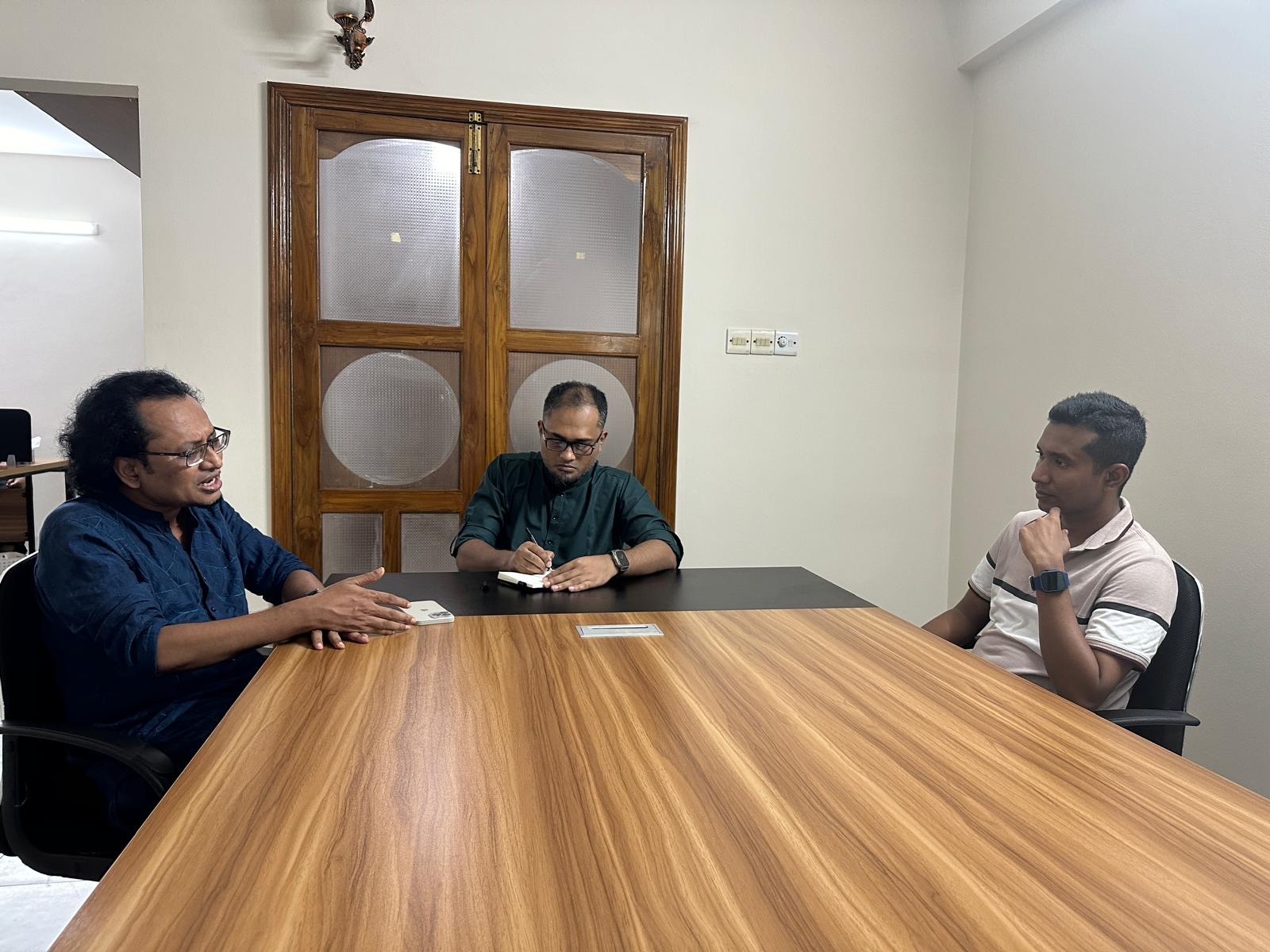
Noteworthy appointments, such as the selection of qualified individuals for public university positions, suggest a positive shift. The interim government has also made commendable efforts to address the needs of those affected during the movement and to preserve its memory. However, a major criticism remains: injured individuals are still struggling with inadequate treatment due to a lack of funds, which is a significant failure of the interim government.
Overall, it is indeed too early to make a final assessment. Given the extensive challenges the interim government faces, it is prudent to withhold a definitive judgment at this stage.
FM: Abdullah Shaheb, my next question concerns the entrenched two-party system in the subcontinent, including Bangladesh. The success rate for third parties or new political forces in Bangladesh is relatively low compared to what we see in developed countries. While Pakistan has witnessed some success with third parties, Bangladesh remains dominated by the major forces of the Awami League and BNP, with new entities struggling to gain traction. Given recent developments, such as the formation of a new committee by a group composed of students and the general public, what do you think the chances are for this new force to succeed in the upcoming elections—whether they occur in six months, two years, or sooner? If a third force were to emerge, what form should it take to enhance its chances of success?
SA: My understanding is that once a political party is formed, the key to its success lies in establishing a strong grassroots presence. This is crucial for any party aiming to make an impact, as seen in the subcontinent. For instance, while Pakistan had three major parties in the last election, India still predominantly features two major parties. Bangladesh mirrors this situation, where the major parties, Awami League and BNP, dominate.
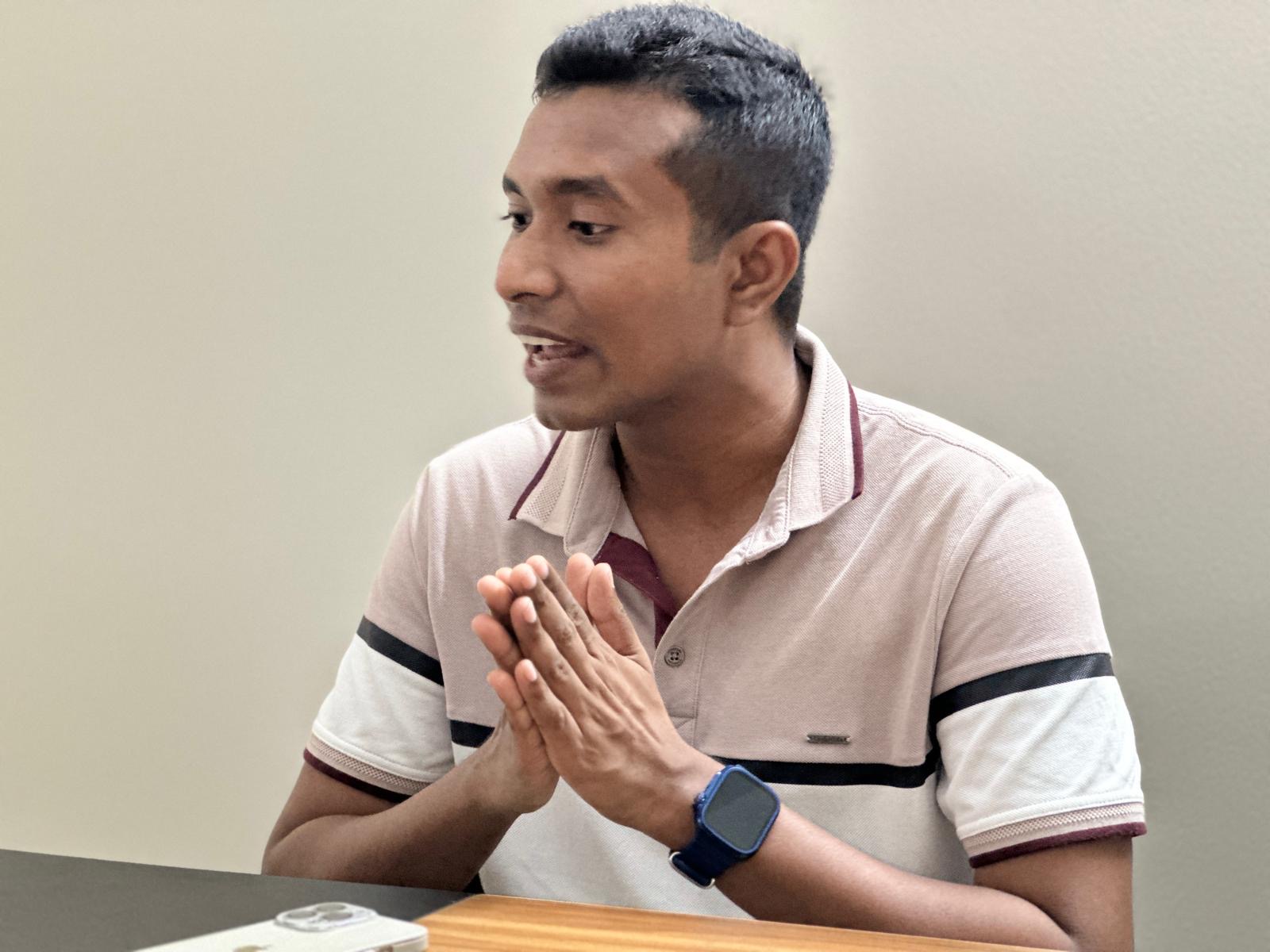
There seems to be a miscalculation when considering the formation of a third force by students and the public. If an election were to occur now, and students formed a political party that won by a significant margin, it would be a remarkable achievement. However, being realistic, Bangladesh’s political landscape favors parties with established grassroots organizations and recognizable symbols.
The movement many discuss tends to be Dhaka-centric, but Bangladesh as a whole is not. The students involved need to recognize the broader context and limitations. Youthful enthusiasm often overlooks potential challenges and shortcomings. Additionally, not everyone involved in the movement has received the credit they deserve. While students played a pivotal role, the movement also saw significant involvement from political parties, albeit under different names and without official banners.
If students believe that only university students deserve all the credit, it would be a mistake. For a more robust political landscape in Bangladesh, it would be ideal to have multiple democratic parties free from external influences. Historically, some parties have sought support from neighboring countries, leading to dependency. A truly pro-Bangladeshi party could help reduce this dependency, contributing to a stronger, more independent Bangladesh. However, expecting students to form a substantial political party overnight is unrealistic.
For instance, consider Imran Khan's experience: despite being a globally recognized figure as a World Cup-winning captain, he had to wait 20 years after founding his political party to become Prime Minister of Pakistan. This demonstrates that even a high-profile individual can take a long time to achieve political success.
Students have ample time to initiate the process of forming a political party, but they must be patient and realistic about their progress. They should focus on spreading their ideas effectively at the grassroots level and harnessing the power of the youth. Before aiming to seize power, it's crucial for them to build a robust organization and present their ideas innovatively to the public.
The priority should be on disseminating their ideas broadly rather than rushing to form a political party. If they have unrealistic expectations about immediate electoral success without first establishing a solid foundation, they may face disillusionment. Such setbacks could hinder their efforts to build a viable democratic party in the future.
FM: Zahed Bhai, do you think it's feasible for a third force composed of students and the public to achieve significant political success in a short time frame? As Abdullah mentioned, it took someone like Imran Khan 20 years to reach power.
ZUR: I’d be pleased if they succeed, but it seems they are starting to understand the complexities of the situation. For example, some coordinators, including Mahfuz Alam, initially told Reuters about their plans to form a political party. However, they later backtracked, claiming their statements were misquoted or misunderstood. It’s hard to believe that a reputable agency like Reuters would make such an error, suggesting they’ve recognized that the timing might not be right for such an initiative.
A citizens' committee has been established, and from their statements and activities, it appears they are currently focused on articulating their thoughts and sentiments rather than immediately diving into politics. This approach seems like a preliminary step toward forming a political party. If they continue on this path, even with elections possibly a few years away, their chances of success seem quite slim. Nonetheless, I hope they do well.
It’s also noteworthy that three of their members have joined the interim government—two as advisors and one as a special assistant. Their involvement means they share responsibility for the government’s performance. Forming a party while associated with the current administration might lead to perceptions that it is merely a "king’s party." However, unlike the 1/11 government, which was perceived as a coup and lacked a popular mandate, the current interim government does have some public backing.
While the interim government has a mandate from the people, it's important to remember that this 'people' group is diverse. Many students involved in the movement may not view you as a leader simply because of your role, and they might not align with the ideology you wish to promote. Consequently, there is a risk that this new party could be seen as an extension of the existing power structure, potentially leading to a negative perception.

Historically, successful attempts to form political parties from within the existing power structure have been rare. For example, Ziaur Rahman was one of the few who managed to do so successfully. Despite his longer tenure, Ershad did not achieve similar success. Others, such as Prof. Yunus, Ferdous Ahmed Qureshi, and General Ibrahim, also struggled to establish successful parties. The current environment suggests that creating a viable political party from within the existing power structure remains a significant challenge.
The students’ assumption that they can automatically claim the movement’s success for themselves might not align with public sentiment. If they want to form a political party, there will be time for that. As Abdullah mentioned, while urban areas like Dhaka are important, rural areas are also crucial for electoral success.
They discuss reforms—whether institutional or constitutional—and assert these were among the movement’s demands. However, how can we be certain of this? Even those who participated in the protests might not fully understand the constitution or recognize which specific articles are at issue. Many people suffer due to constitutional problems but might not fully grasp why or if they even wanted such changes. When talking about reforms with someone from a remote area, it’s unlikely they will fully understand the political jargon.
Historically, Bangladesh has had limited opportunities for a third force to emerge beyond the two dominant parties, largely due to the unfavorable conditions under past dictatorial regimes. In contrast, Imran Khan managed to succeed in Pakistan despite numerous challenges, partly due to a more robust electoral process. His party, Tehreek-e-Insaf, even won seats despite difficulties like the removal of their symbols.
While there is potential for new political forces to emerge in Bangladesh, I remain cautious. If these new groups can act as pressure groups and influence the political landscape in some way, that would be a positive development. However, I’m not overly optimistic about their immediate success.
FM: My final question is directed first to Zahed Bhai and then to Abdullah Shaheb: There is growing pressure for Sheikh Hasina's extradition from India to stand trial in Bangladesh. In this context, I’d like to get your perspectives on whether swiftly bringing Sheikh Hasina back to Bangladesh for trial would be beneficial or harmful for the country. What do you see as the potential advantages or disadvantages of this move?
ZUR: I don’t believe Sheikh Hasina can be extradited back to Bangladesh, and here’s why: First, consider the stance of Shashi Tharoor, a prominent Congress leader, who strongly disagreed with the BJP’s interpretation of the situation in Bangladesh. Tharoor argued that the uprising should be supported and criticized the BJP’s portrayal of Hindus in Bangladesh. However, he did agree with the BJP on one point: providing refuge to Sheikh Hasina and keeping her there. It would be unjust to betray someone who has been a long-time ally.
If India were to send Sheikh Hasina back, it would lose a valuable ally who has served its interests well. Additionally, there is a risk for India if Hasina were to return; given her vindictive nature, she might disclose sensitive information about Indo-Bangladesh relations. Consequently, India may prefer to send her to a third country instead.
Should Sheikh Hasina return to Bangladesh, there are both pros and cons. On the positive side, prosecuting her for crimes against humanity—although not technically genocide as defined—could address serious offenses like enforced disappearances, extrajudicial killings, and mass murders. Such trials could bring justice and serve as a deterrent against future abuses.
On the other hand, if India keeps her or allows her to relocate to another country, Bangladesh might gain leverage in future negotiations with India. This could provide a strategic advantage, allowing us to put India in a less favorable position in our bilateral relations.
SA: I believe Sheikh Hasina has become a thorn in India’s side. There are risks associated with both keeping her in India and sending her back to Bangladesh. If she remains in India for an extended period, India must consider the implications. Narendra Modi, currently in power, faces increasing challenges from political opponents who have gained ground in the 2024 elections. India’s democratic image could be tarnished if it shelters someone with serious allegations of human rights abuses, like Sheikh Hasina, who stands out as an infamous authoritarian with such allegations against her.
Conversely, if India sends Hasina back to Bangladesh, it could face severe criticism, as Zahed Bhai pointed out. The negotiations between Bangladesh and India over the past decade could become highly contentious if details about Hasina's crimes come to light, potentially reflecting poorly on India.
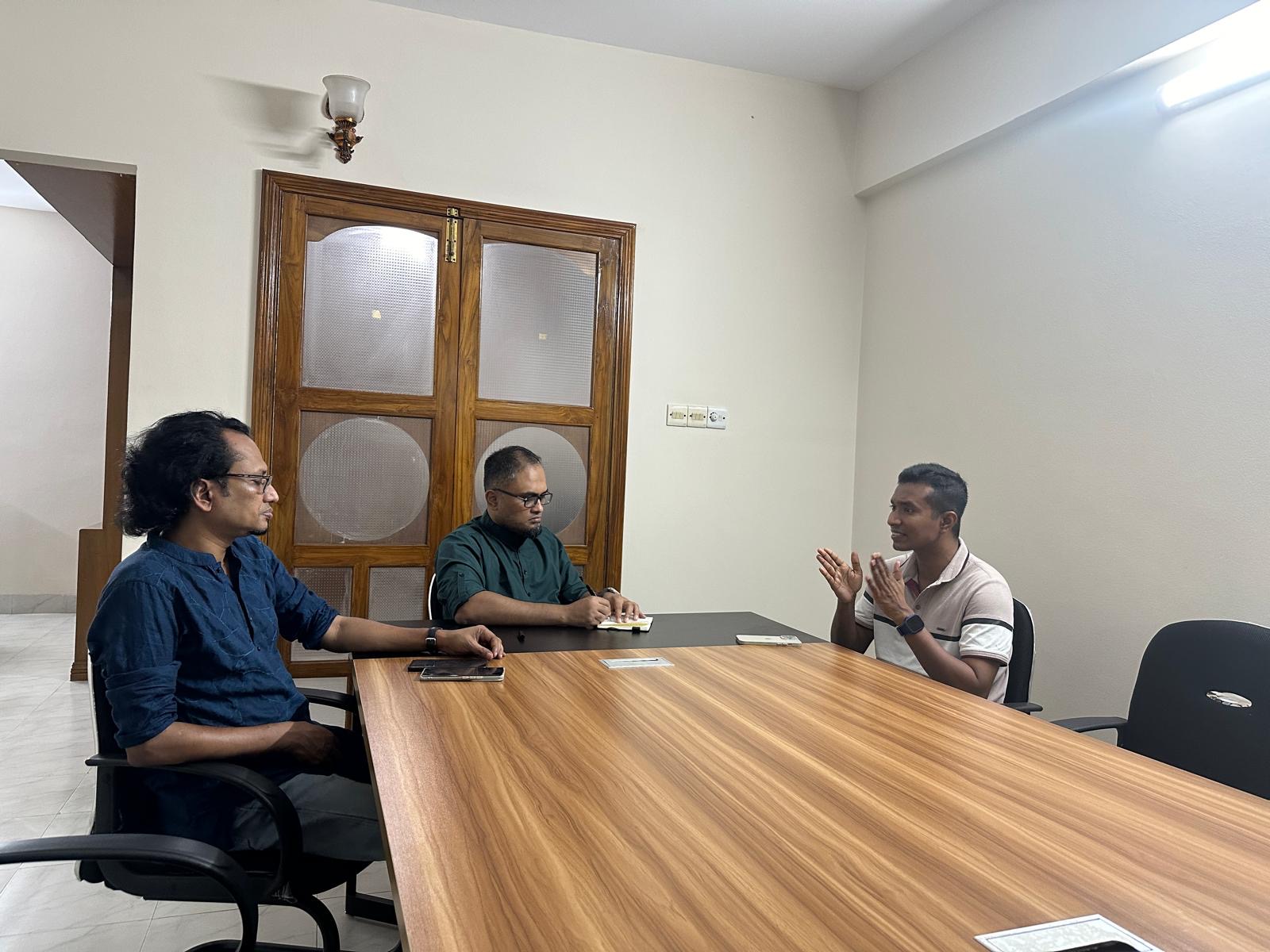
Indian political parties, despite differing views, generally reach consensus on foreign policy. Given this, India might avoid sending Hasina back to Bangladesh due to security concerns, opting instead to relocate her to a third country. Efforts to find such a country—like Finland, England, or the USA—have been unsuccessful, complicating India’s situation further.
If Hasina is returned to Bangladesh, the key issue will be how the country handles her trial for crimes against humanity. Past trials of deposed autocrats have shown that not all have followed due judicial processes, which raises concerns about the potential outcome of such a trial.
When considering Pinochet, Chile’s authoritarian ruler, he was eventually put on trial, though the manner in which it was executed is a separate discussion. If Sheikh Hasina were to face trial, it’s crucial to assess the nature and format of such a trial. For context, the Logi-Boitha movement in 2006, which involved disturbing acts like celebrating over corpses, was initiated by the Awami League. Additionally, the BDR rebellion was one of the most severe crimes in Bangladesh, involving the deliberate incapacitation of a disciplined army, with the blame unfairly placed on the BDR, now BGB, which never received justice.
Other crimes, such as the murders of bloggers and the brutal killing of journalists Shagor and Runi, further eroded public confidence in the judiciary. Events like the Shapla Chattar incident with Hefazat and the 2024 crackdown, including extrajudicial killings and enforced disappearances, showcase a level of brutality that surpasses even that of long-standing authoritarian rulers.
Sheikh Hasina stands out as an exceptionally notorious autocrat. If we are to conduct an exemplary trial, it must be carefully planned, potentially even in an international court. The historical context of the 1971 genocide illustrates our failure to properly document and address such atrocities, as highlighted by Zahed Bhai. We must focus on ensuring a thorough and credible judicial process for Hasina.
If India decides to return Sheikh Hasina to Bangladesh, it could impact the personal relations between the two countries, potentially improving them by demonstrating that India does not shield her. Conversely, if India chooses to keep Hasina or send her to a third country, it might reinforce the perception that India is protecting her, as documented in Pranab Mukherjee’s book and past political support during various elections.
India must weigh the internal security risks and diplomatic repercussions of sending Hasina back. Should India obstruct her trial by relocating her, it could affect Bangladesh’s diplomatic stance, as Zahed Bhai suggested. This issue might become a significant leverage point for future negotiations with India. The way India handles Hasina will have multi-dimensional implications for Bangladesh’s international relations and domestic politics.
FM: Thank you both for this interview.
—-

